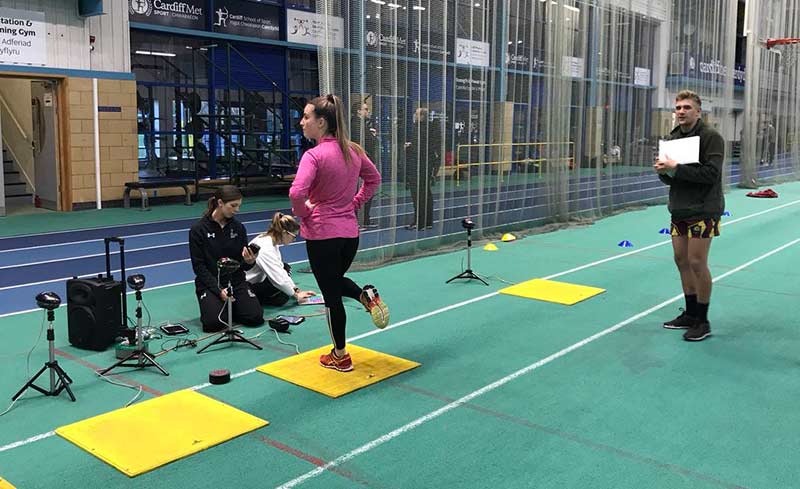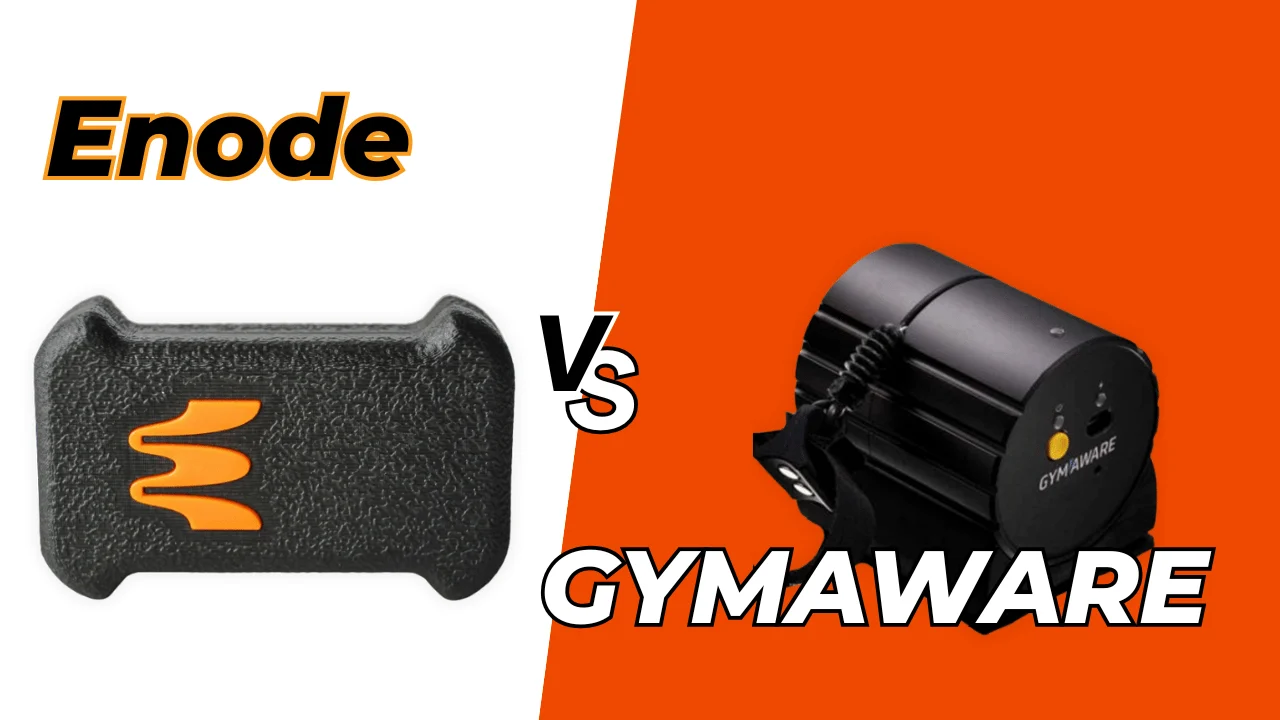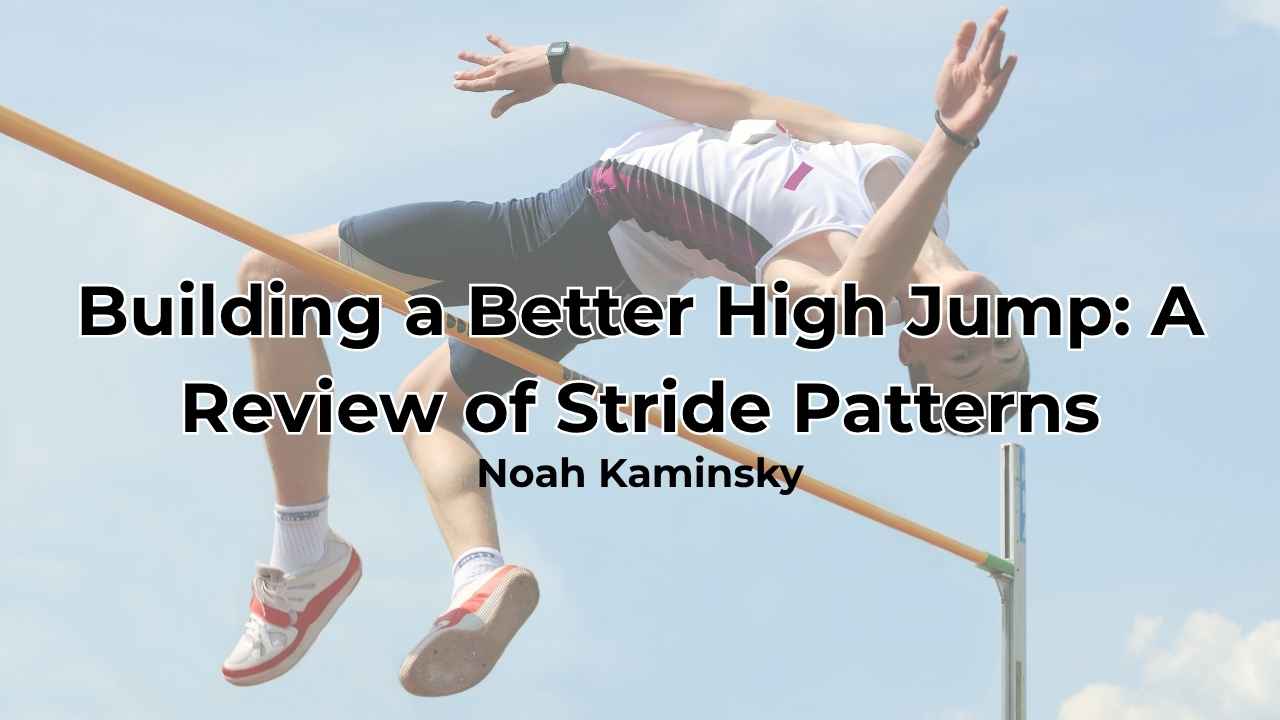With the rise of force plates, you might think contact mats and jump mats would lose momentum on the market, but that is not the case. For decades, the contact mat has helped coaches gather data in the field, and professionals have recently started to look for options that can help capture the reactive strength index of athletes. While jump mats and their respective alternatives are not as informative as force plates, they are still valuable tools if you use them correctly and interpret the data properly.
In this buyer’s guide, we look at the market and the research on the validity of the contact and jump mats. We also present a short list that will help coaches get the information they need to make an appropriate purchasing decision.
What Is a Contact Mat or Contact Device?
A contact mat is basically a surface or sensor that detects a simple binary status of the athlete: whether they are on the ground or in the air. While the information may not seem very comprehensive at first glance, especially if compared to a velocity-based training device or force plate, it can serve as a very valuable tool for coaches. Researchers still use contact mats to see changes in training, and they are reliable options for standard purposes and information.
Contact mats are reliable options for seeing nominal changes in training. Share on XContact mats are usually a meter square and made of a thin, flexible material that senses if a body is on it. There are options for wired and wireless capabilities depending on preference. From an engineering perspective, the contact mat simply determines if the sensor circuit is on or off, and records the change over time.

Most contact mats serve a consistent purpose—to estimate jumping performance by calculating air time based on the assumption that the mechanics of the movement are uniform and repeated. Coaches must know that a contact mat is not a true measure, but simply a very useful calculation that has limits. Due to errors (which athletes gaming the testing sometimes make on purpose), contact mats can be prone to accuracy issues if athletes are not compliant.
Some applications, such as the 4/2 and 10/5 reactive strength index (RSI), are excellent measures because athletes can’t really cheat the test as they can’t manipulate landing mechanics to inflate the scores. The most common use for contact mats is vertical jump testing; however, there are a multitude of assessments available including ground contact times on various jumps (such as a depth drop over a hurdle to evaluate correct drop height to maximize reactivity), Scandinavian Rebound Jump Test, multiple hurdle jump contacts (with multiple mats), and many other protocols really only limited by the needs and imagination of the coach/user.
How Science Evaluates the Technology of Contact and Jump Mats
The strength of the data, regardless of the equipment and calculation, starts with the procedure or protocol of the test. No matter what you invest in, an athlete’s compliance and the coach’s or researcher’s instructions all limit the equipment. Athletes are very clever and often motivated to get better performances. Sometimes they will find movement or test strategies to improve their score, but their abilities may not change. Testing is a responsibility, not just an event with a measurement attached to it. Both the coach and the athlete should be fully vested in the process, and understand what information is useful and what they must discard.
How fast a device can measure the contact period helps determine its value for use in analysis. Share on XAfter testing procedures, you can evaluate the instrumentation limits fairly. A contact mat can sample (speed of sensing change) at different rates, thus giving precision and accuracy to the information. One millisecond may not sound like much, but due to the nature of dynamic movements, contact times that vary by a small amount can separate a national-level athlete from one that makes an Olympic team.
Nearly all the best investigations into the validity, accuracy, precision, reliability, and bias of contact mats are done with force plates and video. In summary, coaches need to know that a device can give a good indication of possible change in performance if they use the same setup. A contact mat may not reveal true ability; this is acceptable when a professional needs to know if a change resulted from an intervention.
The calculations of contact and jump mats are done with assumptions, meaning the readings require a compliant and strict execution of the jump. Jumping, especially for squat jumps and countermovement jumps, can be very problematic because a piece of equipment can’t determine if the athlete was complicit with the procedure and will still deliver a score. Force plates calculate jump height from the force into the device and athletes can’t cheat the measurements because they can’t jump high without putting force into the ground. If coaches understand limitations and proper use of the mats and enforce consistent execution by the athlete, they are an excellent tool to measure and assess progress.
Common Contact Mat Jump Tests
The contact mat is the oldest testing option for sports as they originated in war technologies, specifically landmines. Bosco popularized the contact mat by using it to help make jump testing more accessible for coaches and removed from the limitations and costs of force plates. As the contact mat became more commercial, the data became more inaccurate: the responsibility needed to perform simple jump tests declined because of the popularity of the NFL Combine’s jump and reach devices. A specific guide to using contact mats for jumping and a general guide to jump testing both illustrate the need for proper administration. Most coaches perform bilateral jumps, as hops are single leg movements.
Vertical Jump with Arms: Most athletes can jump using a movement strategy that combines their arms and legs. Many athletes jump to catch or block a ball, and even heading uses the arms to gather force transmission properly. The jumping ability of the body is not the same as the explosive jumping ability of the legs in isolation. Athletes can be excellent jumpers in sport but not very good jumpers in field tests—athletes often jump with preceding movement and speed, so sport-specific testing may be necessary.
Squat Jump (No Arms): An athlete can do squat jumps without arms using a light dowel or with their hands on their hips. The air time is estimated when the athlete becomes airborne and doesn’t make contact with the mat, and the landing leg mechanics can determine if the jump was inflated. If the athlete is consistent, this has a high degree of value to the coach.
Countermovement Jump (No Arms): Like the squat jump, the data can be wildly off if the athlete lands low with a deep bend. A countermovement uses the momentum of the body to transmit a greater force into the ground, which is the reason most athletes have a significant difference between their static (squat jump) and dynamic (countermovement) performances.
Reactive tests are far more useful for coaches if they use a jump mat. A contact time and flight time ratio is perfect for the device as that’s what it is designed to measure. Coaches can have athletes do repeated jumps (rebound) with one or two legs or jump off a box to challenge their reactivity. Drop jumps require the device to be very sensitive and precise as the contact times are usually less than a quarter of a second.
Rebound Jumping: Athletes that perform continuous jumps on the ground get RSI values, and contact/jump mats are excellent tools for this. The Scandinavian Rebound Jump Test is a specific repeated measure that extracts the best jump and uses it as an indication of elasticity and stiffness. 10/5 and 4/2 RSI tests are also common protocols. In these tests, athletes jump a total of 10 or 4 times, with the results given based on the average of the top 50% of the jump RSI scores.
Drop Jumps: Jumping off a small box or platform can help coaches with training prescription or fatigue detection, but is not as popular due to the lack of skill most athletes have with this style of test. Athletes tend to plantarflex their ankle and score poorly, and those that overthink the movement have delayed contact time periods that severely lower the score and are not indicative of their ability.
Hurdle Jumps: Jumping over a hurdle to measure contact times—either from an immediate vertical jump or over another hurdle—can be a valuable plyometric drill. Coaches can use contact time to monitor improvement and select correct individual hurdle heights for optimal performance, making for a powerful tool.
Top Contact Measurement Technology Options in Sport Testing
Several companies provide affordable testing equipment for jump testing and first movement timing signaling. Here are the leading options for coaches and researchers for contact time and flight time sports testing.
Skyhook: From RDM Innovation, Skyhook is a mat-based jump system that has the advantage of being wireless and portable. The mat itself is made of a rugged, plastic-like material with a built-in handle that makes it highly portable. The app is very user friendly for coaches or athletes, with a roster function allowing coaches to keep each athletes’s metrics stored for review at any time, from any device. The app provides charts and data tracking at a touch and also features a quadrant chart that will show coaches what areas the athlete may be deficient. Protocols are fully customizable with the ability to create jump height, contact time, or RSI tests, and results are quickly and easily deleted if need-be. There is a Just Jump conversion toggle that will convert the jump height record to the Just Jump score to allow comparable results from those converting from that popular mat. The aforementioned cloud function is a powerful tool that allows for export with ease and the cloud sync feature allows for virtual and remote coaches to see results immediately from wherever they may be located.
Plyomat: Plyomat is a switch mat-based option that uses a wired connection from the mat to a controller to instantly report ground contact times, jump height, and RSI to a phone or tablet via Bluetooth. The Plyomat app allows the user to customize protocols to their specific needs. Plyomat is known for its ease of use and ability to set rep counts and see results in a large, in-app display. The battery has recently been upgraded to allow for up to 3 weeks use on one charge. One helpful feature is color portrayal of contact time and jump height thresholds, which can be adjusted within the app settings. The app will store roster and results data; however, there is no cloud feature. This makes the data device specific. Plyomat also offers a feature that allows for the use of a Just Jump conversion.
Probotics Just Jump Mat: This analog product is still popular today because of the simplicity of its design. The mat is a little short of a meter long and uses a wired connection to transmit the data to a handheld LCD screen. The device can test vertical jumps or continual jumps with limits. You can connect the Just Jump system to a running test, and you can purchase an additional chip to get contact times for decent RSI testing. The data accuracy can be inconsistent if care is not taken to hold the athlete to a consistent standard of jumping technique. Athletes can sometimes kick their legs out or bring their knees up to increase air time, giving the illusion of a higher jump. With the presence of consistent technique the results will reflect actual changes in the athlete’s vertical jump over time.
SMARTJUMP by VALD: This contact mat, recently acquired from Fusion Sport by VALD, has features such as RFID connectivity for group workflow and can be used fluidly with VALD’s SmartSpeed system. Research on the system is available, and the data is reliable enough for some testing needs, such as the RSI and screening for basic asymmetries with hop tests.
Swift Performance EZEJUMP System: This contact mat is very durable and resembles a thin force plate, but only collects contact data. While the system collects each foot independently, it can’t truly assess the power or force of an individual leg like a bilateral force plate can. The system uses iOS to connect to an Apple device, and you can export the data via email if needed. The system is about a meter square, like typical contact mat solutions. This Australian company’s previous product was popular as it leveraged the simplicity of Apple iPads and Bluetooth technology.
ChronoJump Contact Mat: The least expensive option on the market is an open source project widely used internationally. The system is fairly useful for small projects and coaches and researchers who are very technology savvy, but you shouldn’t use it if you expect a plug-and-play experience. In addition to the contact mat, the company also provides other tools for sports testing, such as an LPT device and timing gates.
gFlight: The gFlight, developed by the U.S.-based company Exsurgo, is a straight to the point jump device offering several contact time-derived jump metrics (ground contact time, time in air, and reactive strength index). Its wireless setup and small footprint makes it ideal to travel with and easy to store. Metrics are immediately shown on the display screen, allowing for real-time objective feedback to both the coach and the athlete. The low price point and portability of the gFlight makes it quite unique when compared to other jump mat and contact zone technologies. The gFlight is part of a new wave of sports tech designed to be both budget- and user-friendly.
All of the equipment above has a digital reading or smart device display, or connects with a laptop or full Windows tablet. It is also all battery-powered or powered by a computer via USB or similar.
Practical Applications for Jump Mats
Although there are advances and price reductions in the force plate market, investing in jump mats is a worthwhile idea. Most of the indirect measurement devices are highly portable and simple to use, making them very suitable for training camps and coaches who need to perform field tests. Nearly every system can export data into either CSV files or Microsoft Excel.
Common uses go above and beyond jump height. Jump testing can be used to test the readiness of the athlete by comparing daily jump heights or contact times to historical data. Practitioners can individualize training by using ground contact times to bucket athletes by needs analysis. Coaches can also determine individualized drop heights on depth jumps to allow for the lowest contact times or highest jump height rebound. It can be used in the same way to individualize hurdle heights for plyometrics to utilize optimal ground contact times.
If you plan to buy a contact mat look specifically at the model and make, as there are several investigations available to validate the data integrity and show where they are strong within the market. Even with the smartphone app market growing, contact mats are staples and they are not going away. They are easy to use in groups and allow coaches to administer the tests without restrictions.
Since you’re here…
…we have a small favor to ask. More people are reading SimpliFaster than ever, and each week we bring you compelling content from coaches, sport scientists, and physiotherapists who are devoted to building better athletes. Please take a moment to share the articles on social media, engage the authors with questions and comments below, and link to articles when appropriate if you have a blog or participate on forums of related topics. — SF






1 comment
Vyshakh Krishna
I am seeking you the product details of the contact mat.